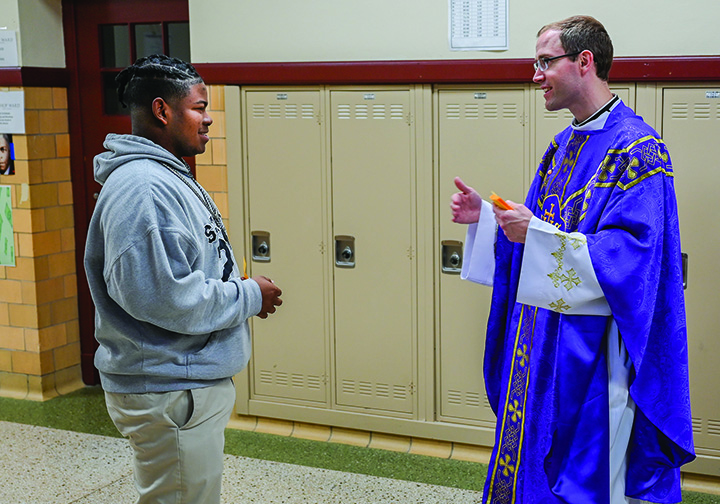
by Moira Cullings
moira.cullings@theleaven.org
KANSAS CITY, Kan. — “These have been the best four years of my life,” said Father Mark Ostrowski, chaplain at St. James Academy in Lenexa.
“Every day I go there is a blessing,” he said. “It’s a special place. I love the kids and the energy and their joy. It’ll be a sad day when I’m asked to leave.”
Sometimes, he’s at St. James to celebrate Mass or offer confession. Other days, he’s teaching a class or attending an athletic event.
“Then there’s always kids that want to just go on a walk,” said Father Ostrowski. “They’ve got stuff in their life and need someone to talk to.
“That’s one of the most important things, is to give them an image of a spiritual father who wants to walk with them and be present.”
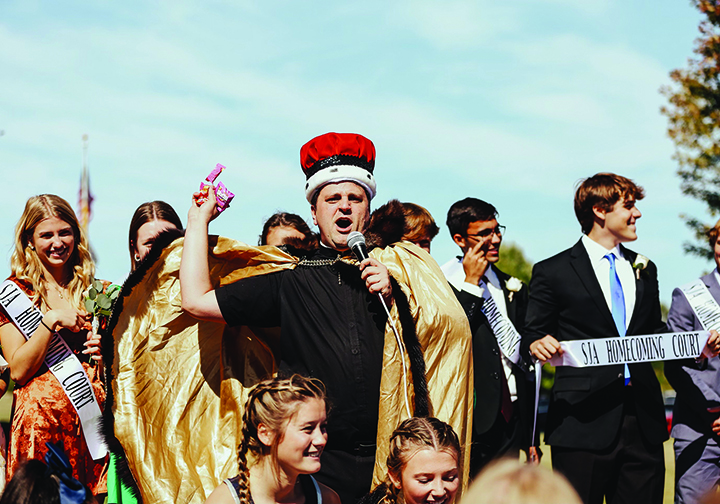
The archdiocese has chaplains serving at its five Catholic high schools, offering what Father Ostrowski calls a “ministry of presence.”
Spiritual fatherhood
Chaplaincy comes naturally to Father Joel Haug, who is in his third year at Bishop Ward High School in Kansas City, Kansas.
“I’ve always had a desire to work with young people,” he said, “especially those that need another positive father figure in their life.”
Father Haug is also an associate pastor at St. Joseph Parish in Shawnee.
Working with young people, in particular, has helped him act as a spiritual father to both the students and his parishioners.
“I also see that hurts that young people experience can easily contribute to later life problems that I encounter in the parish,” he said, “especially in marriages and families.
“Healthy, faith-centered families provide stability for young people that helps them to make better relationship and faith choices as an adult.”
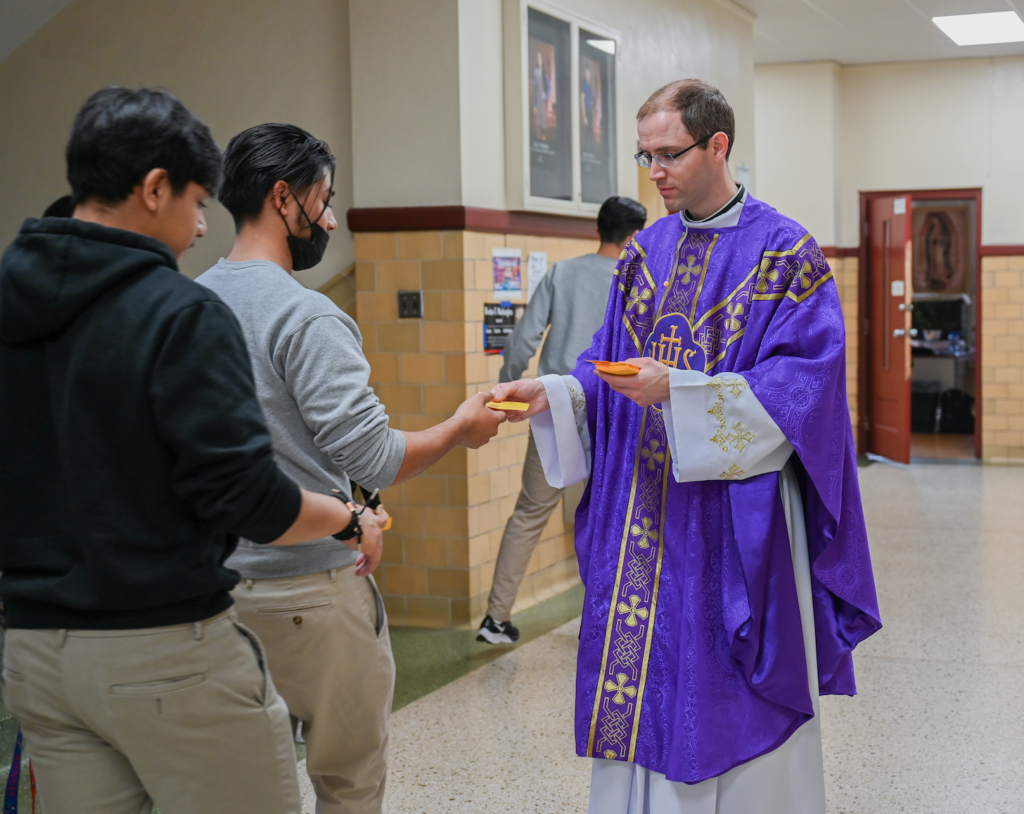
Like many chaplains, Father Anthony Mersmann, who also serves as associate pastor at Good Shepherd Parish in Shawnee, was open to becoming a chaplain but had some hesitancies.
“I didn’t know what to expect,” he said. “I [went to] public school my whole life. I kind of assumed it would be similar, but I don’t know why I assumed that.
“It took quite a while to really see Bishop Miege High School and get an understanding of how things work here.”
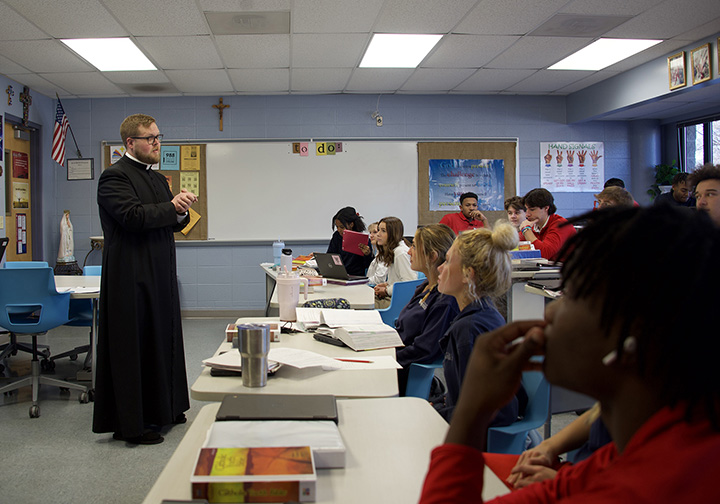
Father Mersmann had only stepped inside a Catholic school a few times before making the plunge into chaplaincy at the Roeland Park school.
He’s learned a lot about the students over the past three years.
“I feel like high schoolers are in a prime [time] for figuring out who they are,” he said. “Being able to see those decisions and discoveries and moments of learning — it’s a really key part of life as a human being.
“It’s helpful being a priest here in that these students, and really anybody in high school and college, are in a place where you have to start deciding: Are you going to follow Jesus or not?”
Learning the ropes
Sometimes, a chaplain inspires vocations.
Such was the case for Father Thomas Maddock, chaplain at Hayden High School for the second year and associate pastor at Christ the King Parish, both in Topeka.
“That was a huge part of why I went to the seminary,” he said, “because of my high school chaplain at St. James (Msgr. Ray Burger).
“But high school students can be a tough bunch to reach and connect with. In that sense, I was definitely nervous [to become one].”
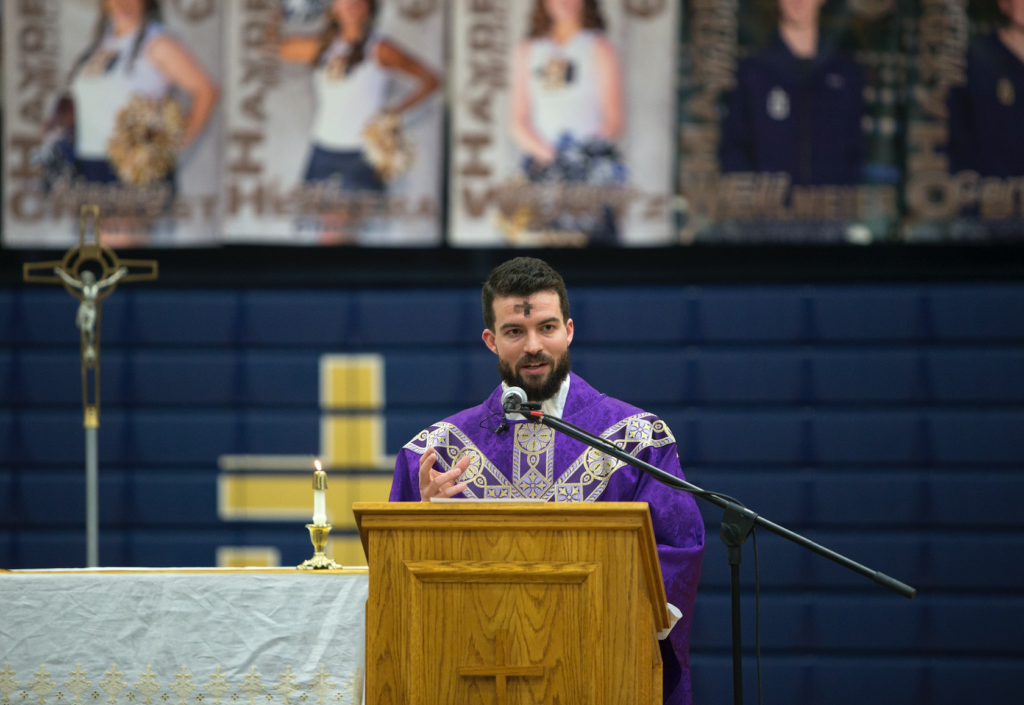
Father Maddock has found similarities and differences between his high school experience and that of students today.
Growing up, Father Maddock and his friends were well-behaved kids who stayed out of trouble, so working with students who aren’t like that has been interesting for him.
“I think the most challenging part is to get the kids’ attention toward God in various parts of their day,” he added. “Their life for most of them is super-busy. It’s school, sports, friendships.
“Everything is such a distraction in the world.”
Like Father Mersmann, Father Ostrowski, who also serves as associate pastor at St. Joseph Parish in Shawnee, was worried when he first became a chaplain since he was home-schooled for the majority of his education. But it hasn’t been a problem.
Times have changed since he was growing up, and he’s noticed how much electronics influence the current generation, like when it comes to asking someone to a dance.
“That was certainly different in my day,” he said.
“One thing I’ve learned is that the witness of high schoolers to each other is so important,” he added. “Kids listen to each other very much, and they care about what seniors and older kids think and how they [act].”
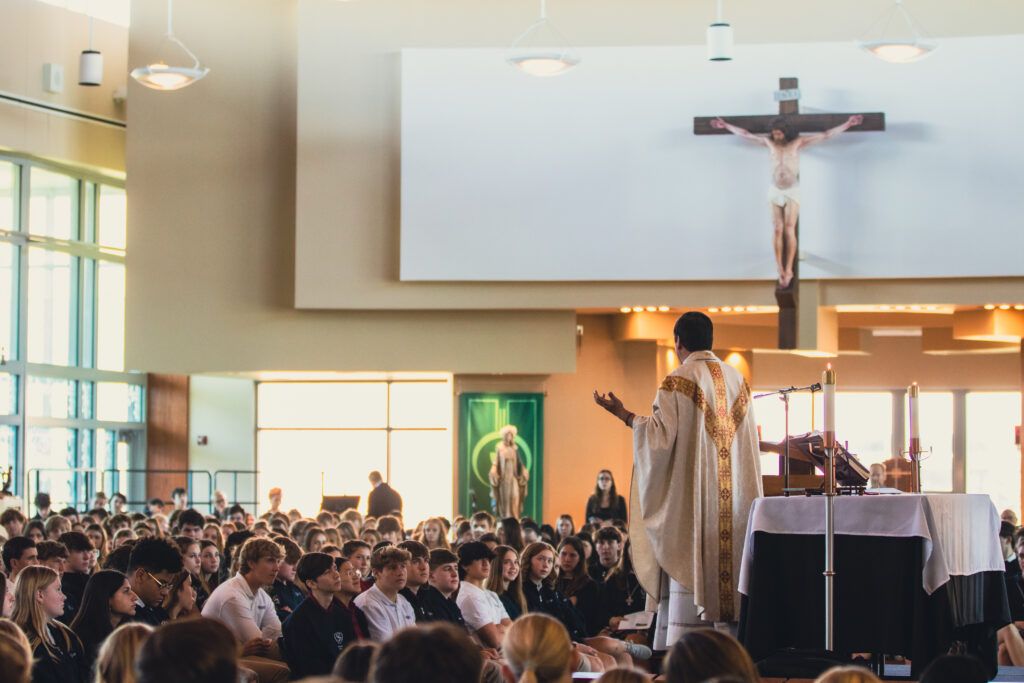
Father Ostrowski has appreciated the joy his students have brought to his life.
“Even as a priest, sometimes I come in and I may not be excited for the day or I’ve got things I’m worried about, but kids are just so joyful and energetic.
“Every day, even if I came to school in a bad mood, it’s always a good day to be there.”
He said the atmosphere is a critical part of that.
“It’s just different from the rest of the world,” he said. “You’re at school, and [the students are] happy to be around each other. That’s so externally visible that it changes you.
“That’s why it’s fun to be a grandparent — because it makes you feel young again.”
Solace in the sacraments
On paper, chaplains in the archdiocese are supposed to split their time equally between their parish and high school assignments.
But in real life, that can be a challenge.
“I have heard that a parish priest is one who always needs to be somewhere else,” said Father Haug.
“Since both the parish and school are full-time realities during the school year,” he continued, “I do feel that and constantly have to make sacrifices of one for the sake of the other, depending on the day.”
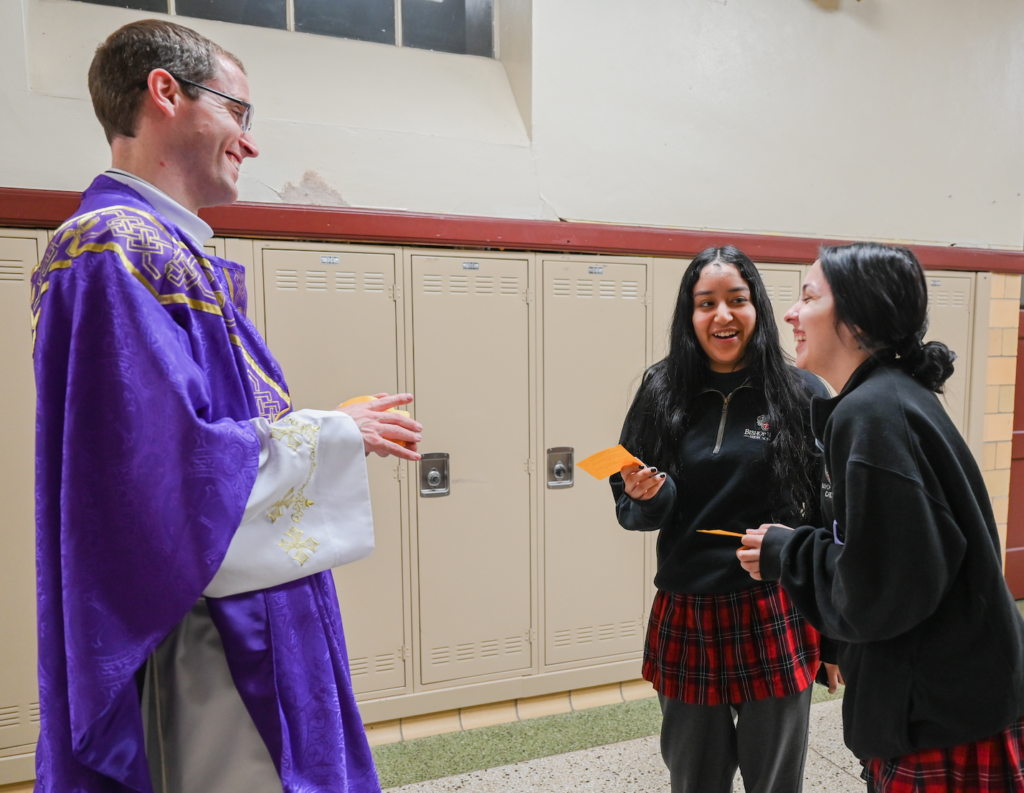
Father Ostrowski compared it to a dad having to choose between his children’s sporting events.
“Sometimes, they’re both playing games at the same time,” he said. “You can’t be in two places at once.”
The priests typically visit their schools multiple days a week, speaking in classrooms, celebrating Mass, leading eucharistic adoration and offering the sacrament of reconciliation.
“It’s one of my favorite parts of my priesthood in general,” said Father Maddock of confession, “but specifically at the high school.
“Meeting kids where they’re at in their struggle and encouraging them, calling them to the faith — it’s really powerful getting to help them in that way.”
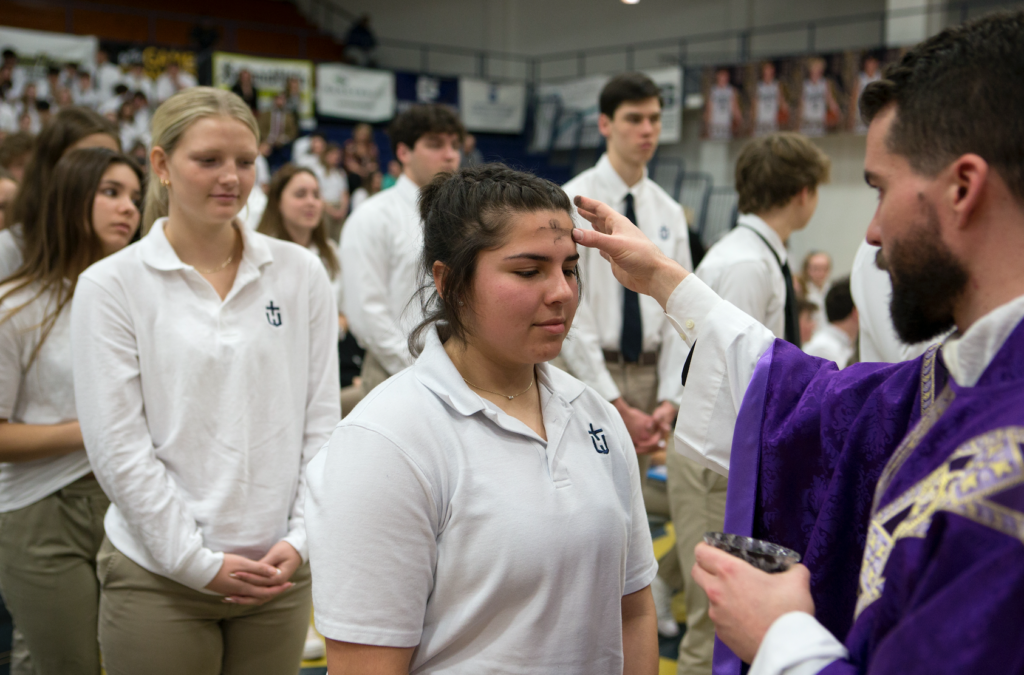
Father Ostrowski agreed.
“On Fridays, I probably hear about three to four hours [of confessions],” he said. “We have a great culture of confession.”
Father Ostrowski said just being there can make a difference for students.
“Sometimes, there are some really challenging things that kids have to handle at an early age,” he said, “so that’s a large part of it.
“Being around is great for kids because if they see you, they can ask you things. They can say, ‘Father, would you come to this or give us a blessing or bless these objects?’
“The ministry of presence is very important at a high school.”
Father Haug said faith-based experiences like eucharistic adoration also have a powerful effect on his students.
“Between retreats and these prayer times, our students have shared that they really appreciate the time for silence,” he said, “which they don’t get much of anywhere else.”
Father Haug makes time for each student from a theology class to visit with him one on one. He encourages them to use the time for confession and to share with him a prayer intention.
“I then just say a little prayer for them out loud,” he said. “They have the option to be anonymous and behind a screen, and the majority prefer that.
“It has been amazing to experience their openness and vulnerability, and I believe many have experienced Jesus’ love and healing in these moments.”
Combating the culture
Although the current chaplains are still young themselves, the generational differences between themselves and their students tend to be vast.
“The culture is moving so quickly,” said Father Mersmann. “Even though I’m a young priest, I don’t know the words that they use.
“It doesn’t matter if you’re a 28-year-old priest or a 45-year-old priest. If you’re a father that’s invested, that’s what matters.”
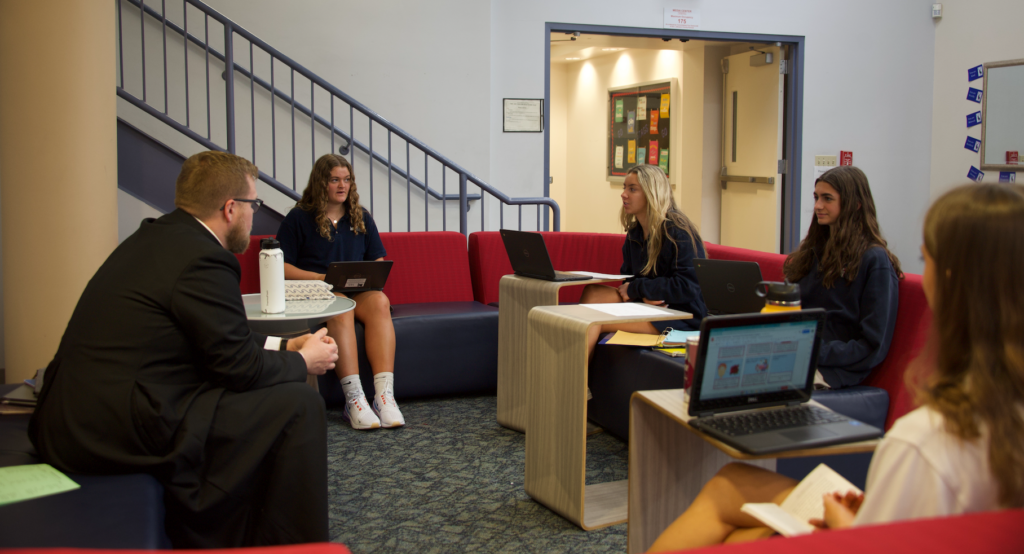
Sometimes, chaplains’ personal experiences growing up are also much different than their students’ upbringings.
“Living in the inner-city, being tethered to phones and social media, and going through a pandemic are pretty foreign to my high school experience,” said Father Haug, who attended Maur Hill-Mount Academy in Atchison. “Yet the human experience of trying to discover who we are and where we belong remains constant.
“I know I felt a desire to go deeper than the world was offering in high school, and I think they desire that, too, even as they are barraged by distractions.”
Other aspects of the youth are more relatable.
“Like every generation, they need the stability of people loving them, excited to see them so that they can better love themselves and believe they are worth loving,” said Father Haug.
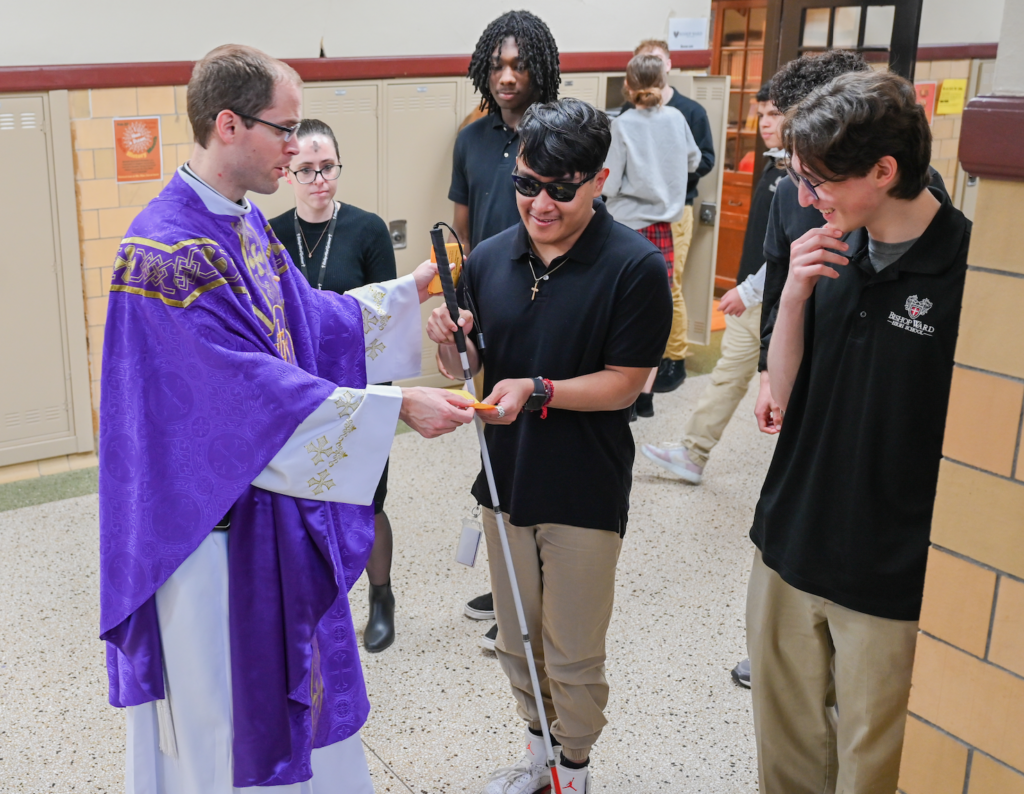
One thing has surprised him in his chaplaincy.
“I shouldn’t be surprised,” he said, “but I love how many students have appreciated the time for prayer and silence in front of Jesus in the Eucharist.
“Even if they can’t put it into words, they are drawn to the peace of that experience.”
Looking forward
When they’ll eventually have to leave their assignments as chaplains, many aspects of their ministry will be missed.
“It’s easy to goof around, give each other trouble and have that kind of energy and lightheartedness,” said Father Maddock. “I’m definitely going to miss that about being around high schoolers — that energy they bring.”
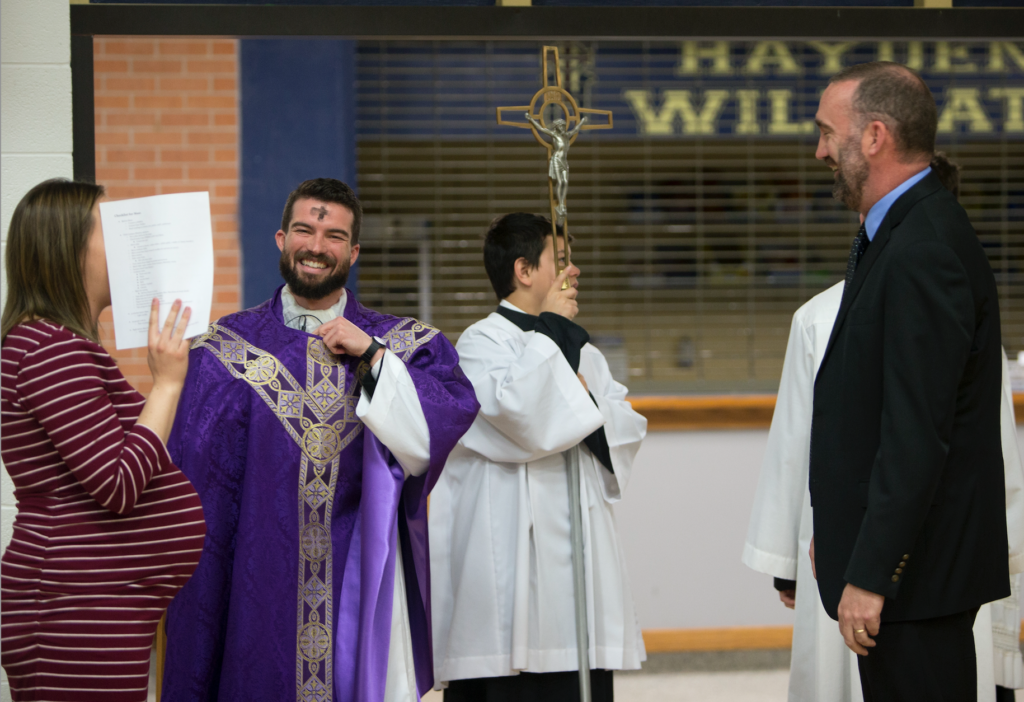
When Father Haug looks ahead to the future of the church through the prism of his students, he sees both challenges and hope.
“The choice to be living as a Christian is [an] increasingly radical, countercultural one,” he said. “The percentage of young people who are making that choice is growing but still small.
“Those who will be active in the church moving forward will be very authentic — not afraid of the messiness of the lives of the people that they minister to.
“The Holy Spirit is at work, raising up young disciples ready to confront the growing challenges of our times.”






